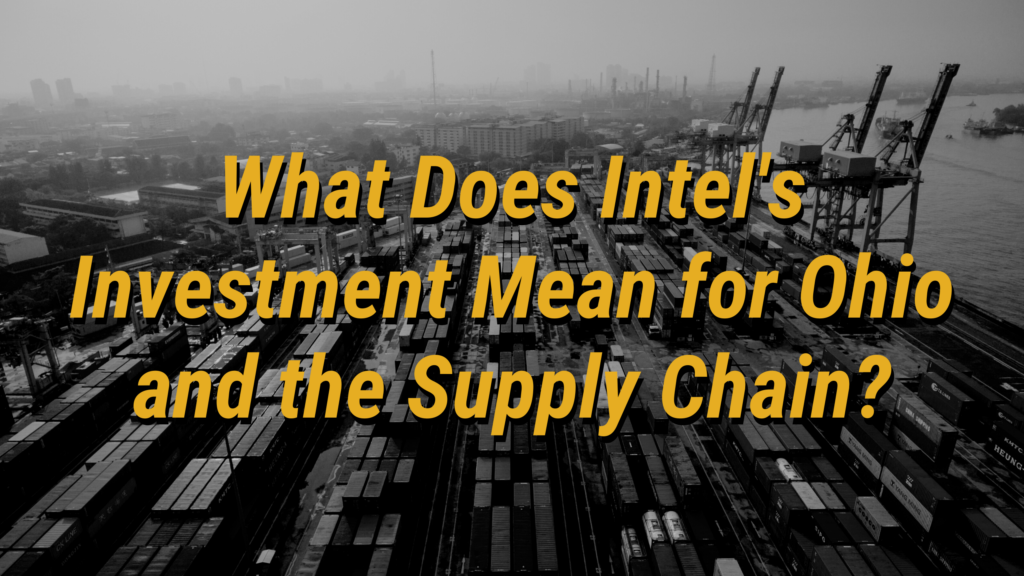
Authored by: Peter Coratola, Jr., President and CEO, EASE Logistics
Microchips are tiny transistors made from silicon that run the technology in our cars, computers, and other devices.
The microchip industry has been under increasing duress due to the rising demand for high-tech. This was further exacerbated by the COVID-19 pandemic. Some industries stopped operations altogether – making the microchip shortage even more dire than it already was. Meanwhile, there was a jump in smartphone and home office supply purchases because people started working from home.
By the time the world began to re-open, microchip manufacturers couldn’t keep up. On top of that, COVID shut down ports and complicated the supply chain because the U.S. relies too heavily on foreign manufacturers.
As of 2020, approximately 70% of all microchips were made somewhere in Asia, whereas 12% of microchips were manufactured in the U.S.
About 169 industries have been impacted by the microchip shortage, according to Goldman Sachs. Industries like automotive bear more of the brunt than others. Many Midwest-based car manufacturers halted production due to shortages, delaying the delivery of thousands of cars.
At EASE Logistics, a multi-operational supply chain and transportation solutions provider headquartered in Central Ohio, we’ve had a firsthand look at how supply chain issues are affecting the economy.
But, earlier this year, the U.S. saw a light at the end of a long, troublesome tunnel as Intel announced its more than $20 billion investment toward establishing two new leading-edge microchip factories in Ohio – a huge step forward in answering whether or not the microchip shortage will ever come to an end.
What Intel’s Investment Means for Ohio’s Businesses
Intel’s planned manufacturing facility in Ohio will be its most hi-tech manufacturing campus yet. It will also be the largest single private-sector investment in Ohio’s history and one of the largest microchip manufacturing sites in the world. This has a variety of implications for our region and state.
Job Creation Potential
The investment is expected to create 3,000 Intel jobs and 7,000 construction jobs over the course of the build. Intel’s investment will also be a magnet for attracting a broad spectrum of businesses that want to be around the mega-site, resulting in the creation of tens of thousands of additional local long-term jobs.
But what does it mean for Ohio businesses, particularly those in Central Ohio?
Undoubtedly it will benefit us. People will relocate to our region and this will be an opportunity for businesses to hire better talent and work with more customers, suppliers, and partners.
A Little Friendly Competition
However, this is Intel – a globally leading company with a lot to offer. In the age of the “Great Resignation,” where people are leaving their current jobs for something better, we non-Intel businesses will have to step it up. The competition will increase among each of us for Intel’s business and among all of us for quality talent.
Challenges like this are a good thing. They make us better as employers and compel us to step up how we operate, how we care for our employees, and how we innovate. It’s intimidating but exciting.
A Manufacturing Boost
Intel purchases, assembles, and tests certain components from external vendors located primarily outside of the U.S.
To Intel’s benefit, Ohio is a manufacturing state with access to more than 60% of the U.S. and Canadian populations within a one-day drive. That’s the potential to rapidly reach domestic suppliers capable of providing microchip components. Ohio is also close to 70% of current North American automotive assembly plants which can help Intel boost the lagging automotive market.
Pushing the Limits of Innovation
Ohio has a large innovation network with organizations such as DriveOhio and SmartColumbus that are doing incredible work around smart mobility, including self-driving and automated trucks and passenger vehicles.
Intel will be producing the microchips that power Ohio’s smart and autonomous mobility innovation. In turn, Intel will benefit from having these partnerships nearby as it is actively pursuing applications of intelligent transportation technologies for mobility, trade, public use, and other applications.
It’s a mutually beneficial opportunity for Intel and the state of Ohio’s interest in mobility innovation.
At EASE Logistics we’re already working with DriveOhio, the Beta District, and other Ohio-based companies to test technology applications for reporting and monitoring trucks. Intel is testing artificial intelligence and the Internet of Things for fleet management. We see an opportunity to partner with them to reach our innovation goals of disrupting the logistics industry and helping to make Ohio the best state for autonomous and smart mobility.
Microchips Bring Growth Potential in Ohio
This investment will challenge our state’s businesses to be better but only for the benefit of the state, its citizens, and themselves.
Through the work Intel does and the potential draw it brings with it, the investment will boost the state and regional economy, make the state’s business climate better, and provide relief for a long-standing issue in the global supply chain.

ABOUT PETER CORATOLA
Peter developed a strong entrepreneurial spirit and dedication to service at a young age. After graduating from The Ohio State University, Peter began his career in logistics. As a young professional, he quickly recognized missed opportunities.
He had an ambitious dream to disrupt the industry by creating
an unparalleled customer experience and highly responsive, 24/7/365 business model. In 2014, Peter established EASE Logistics to elevate his vision of “changing the narrative of third-party logistics.”


